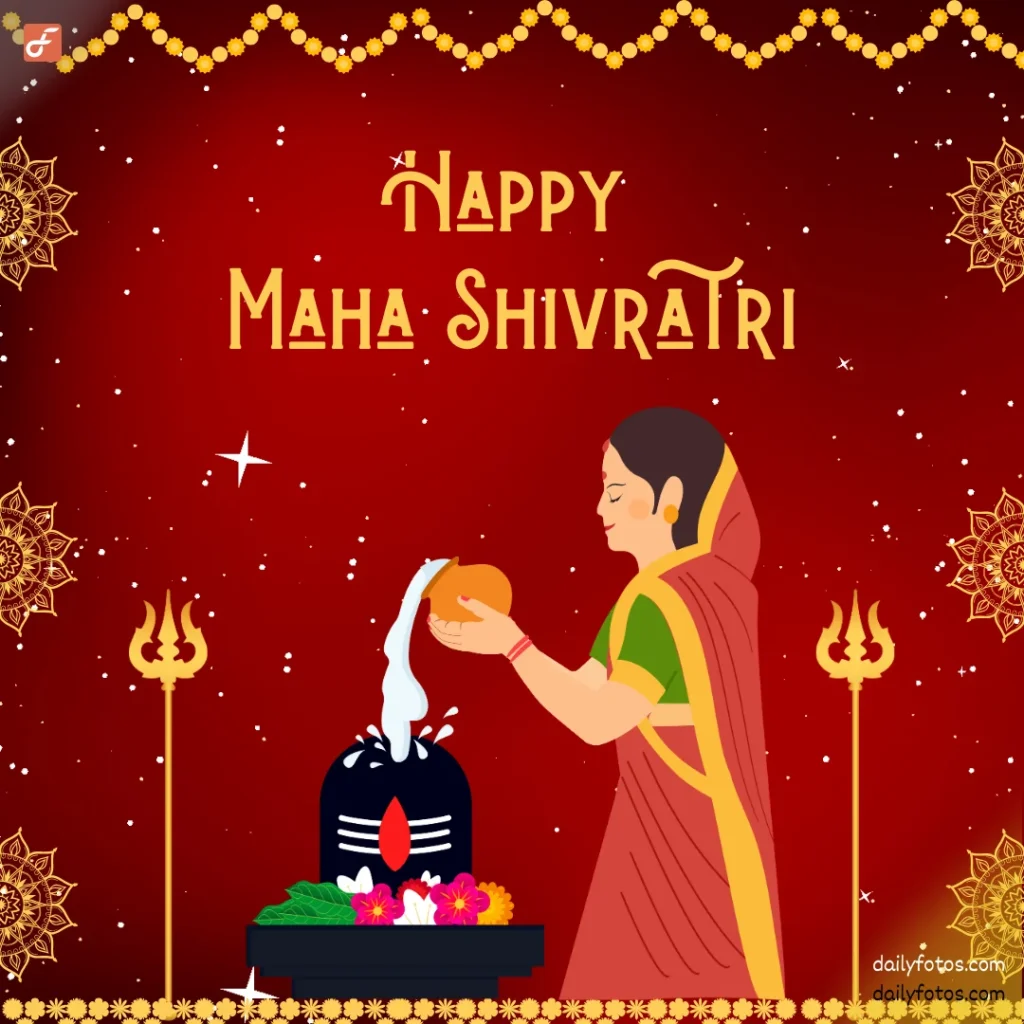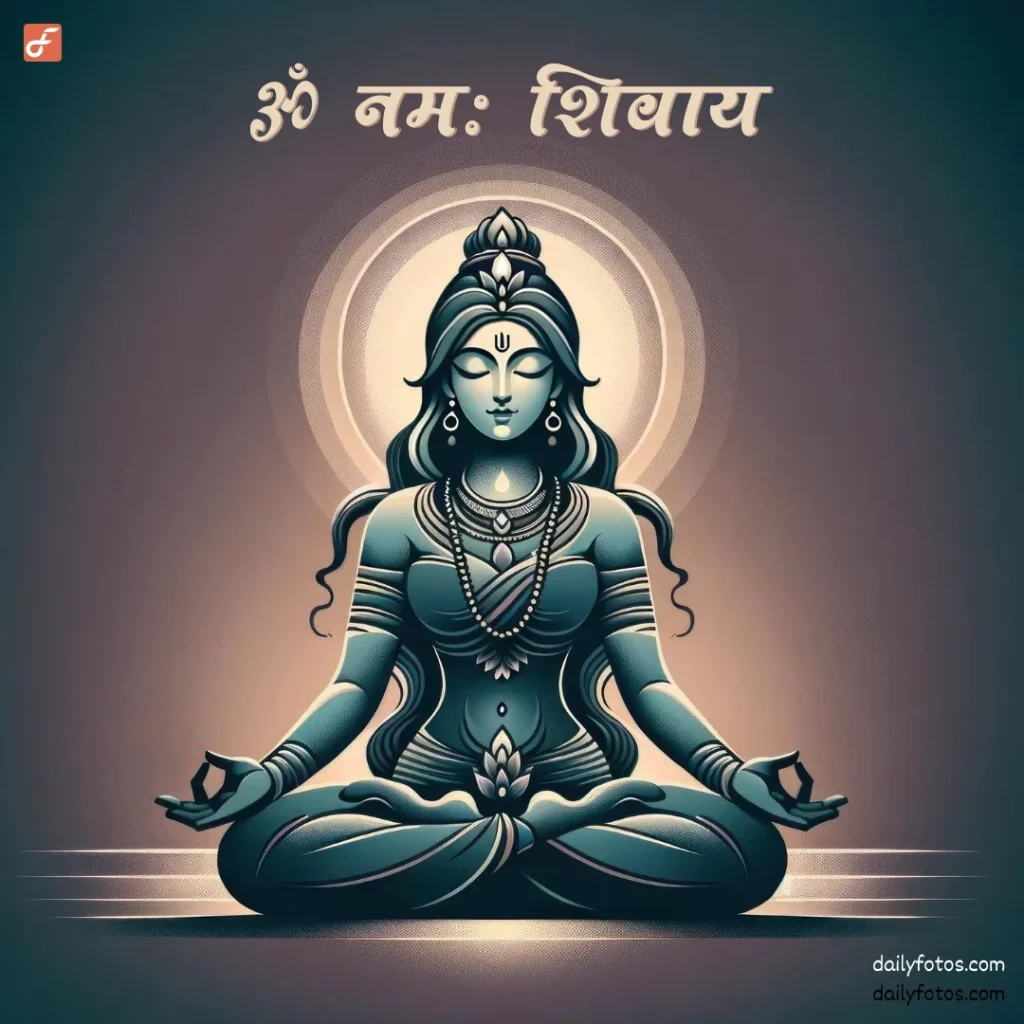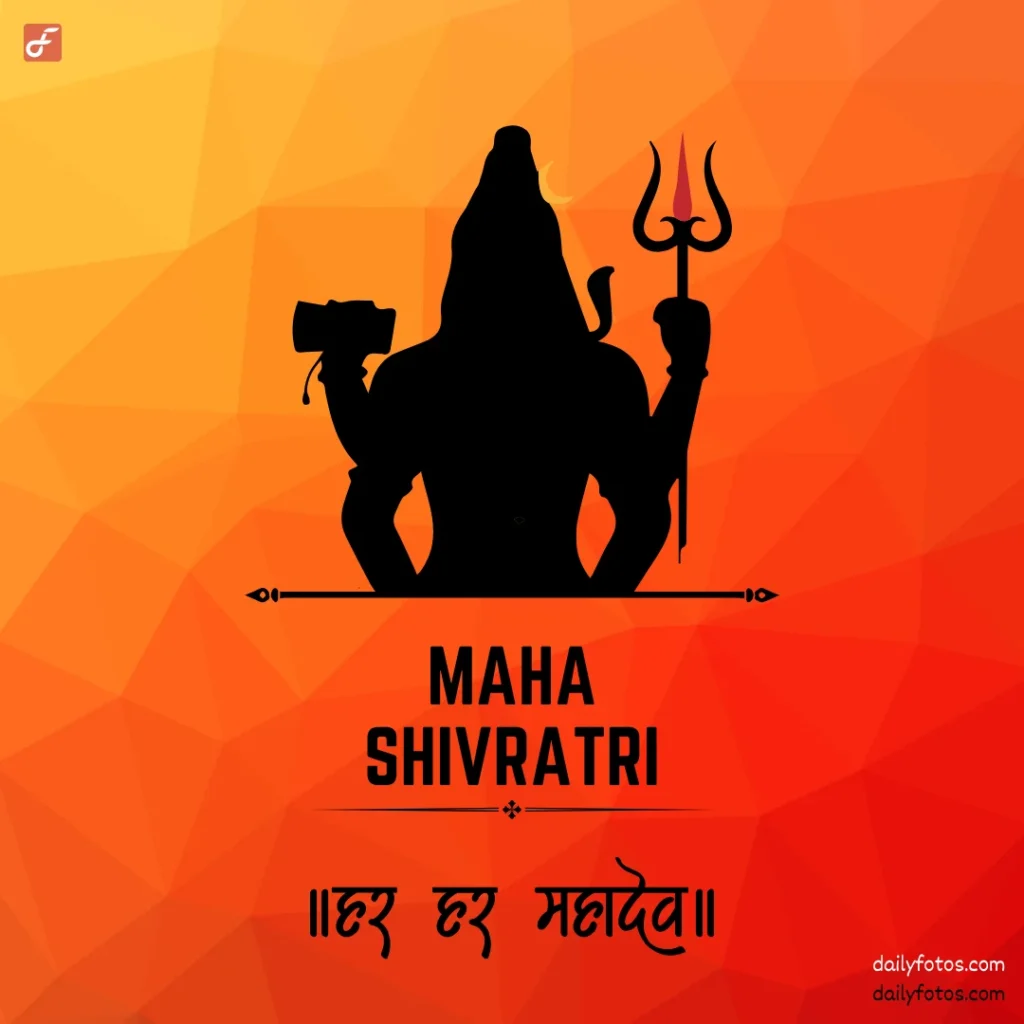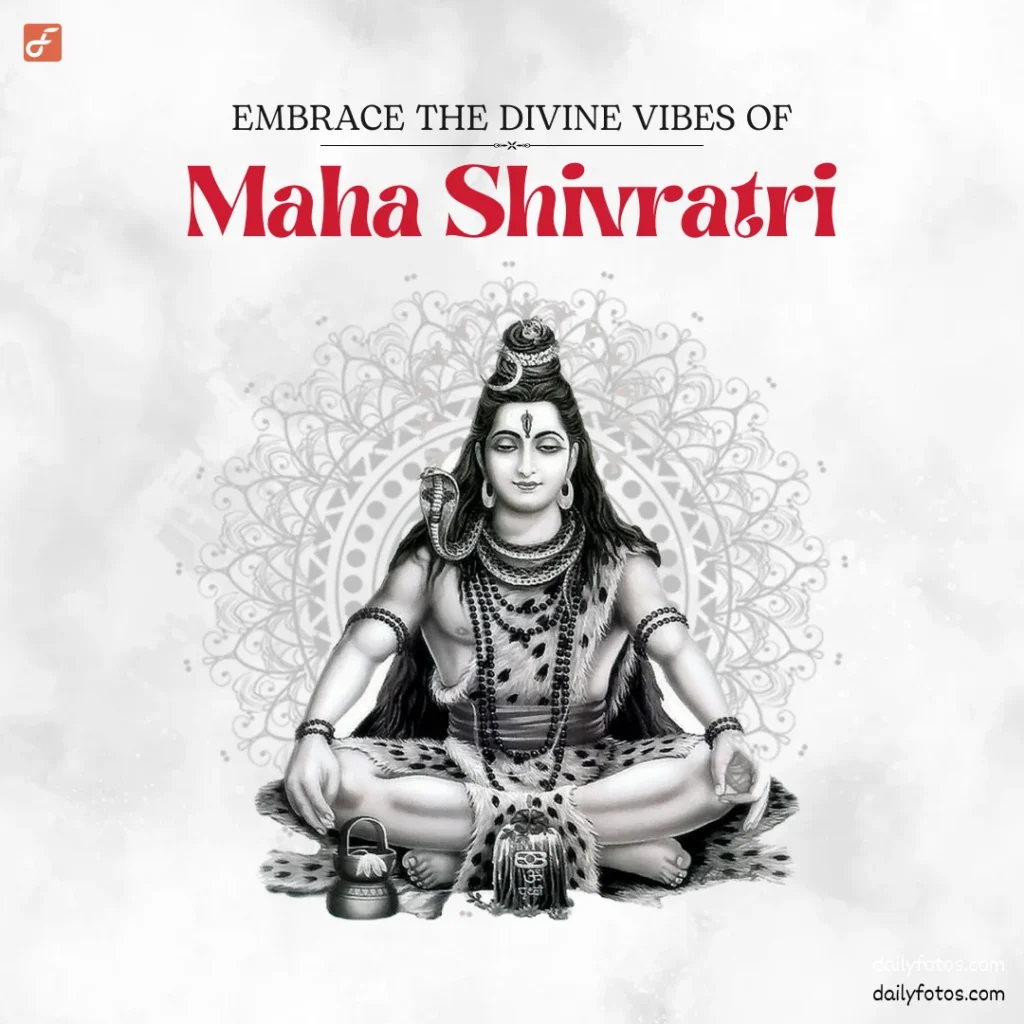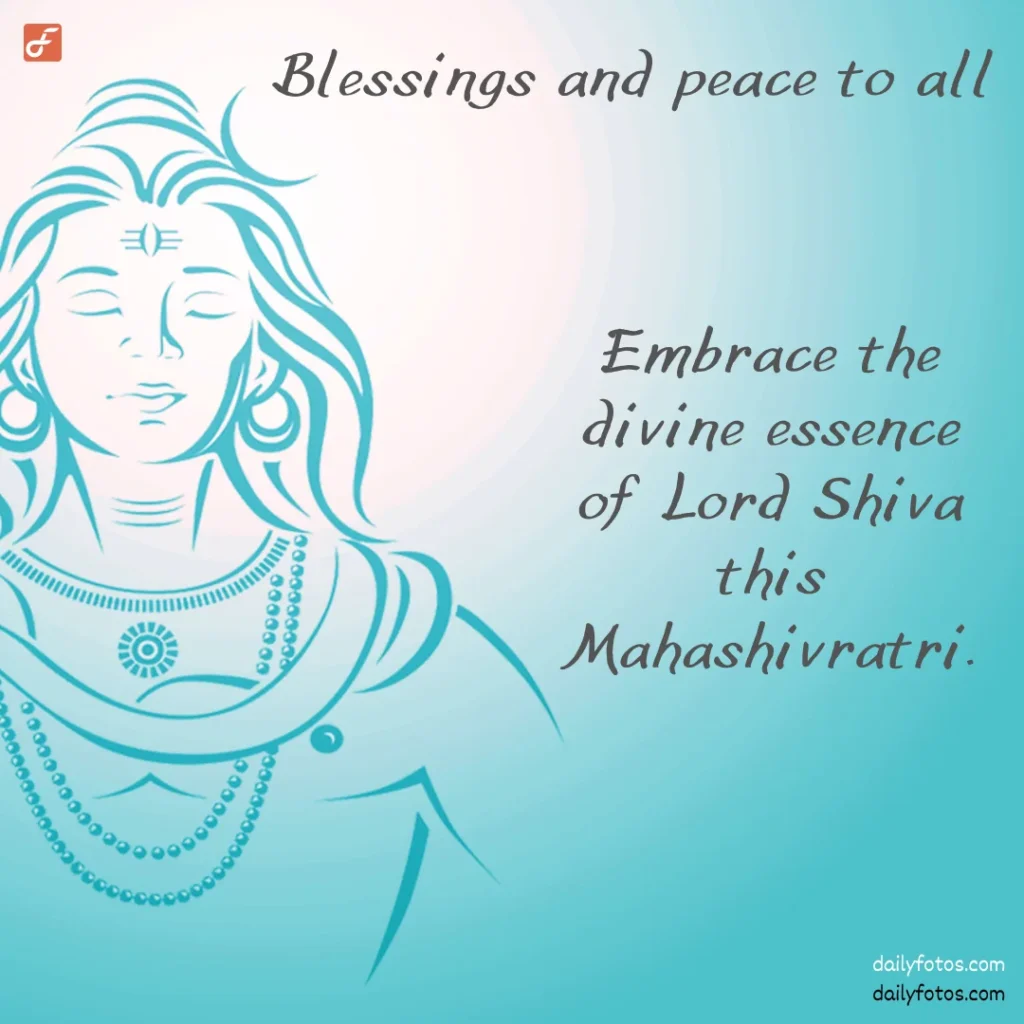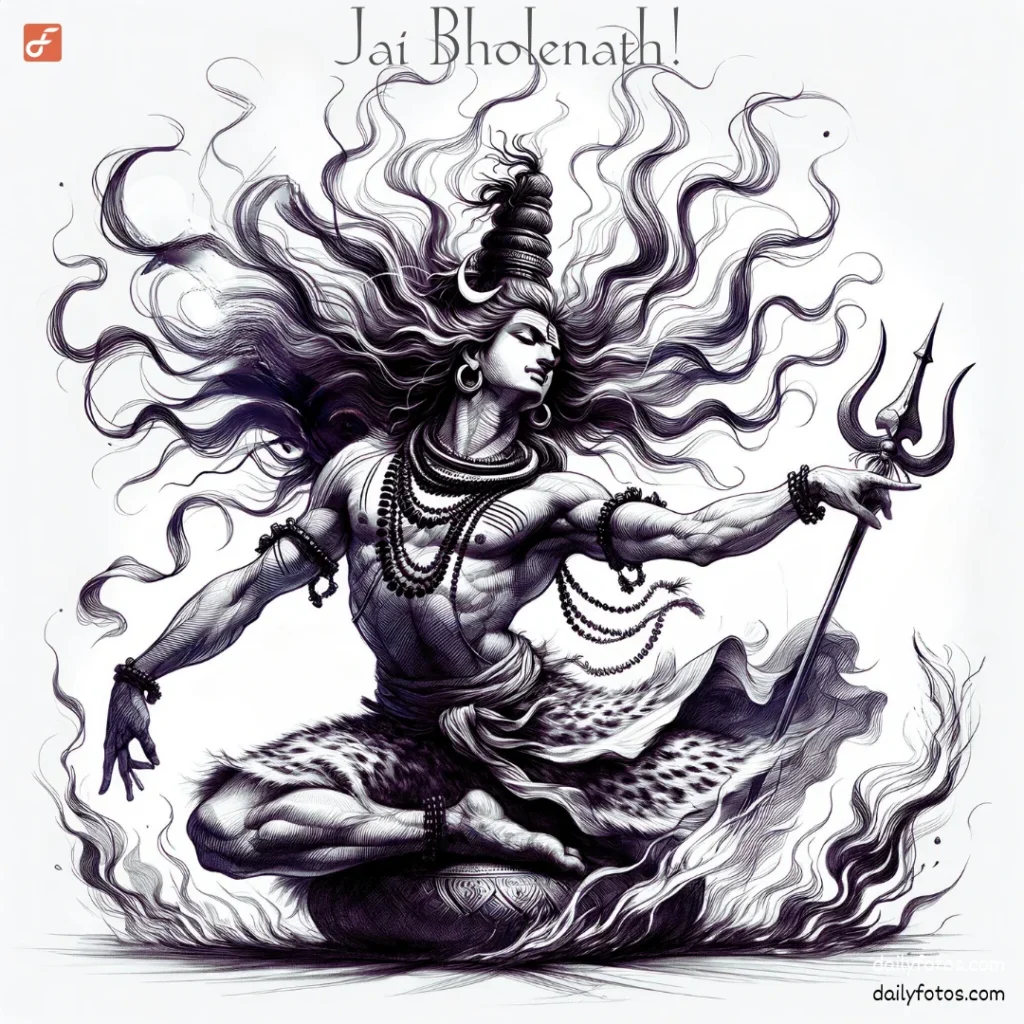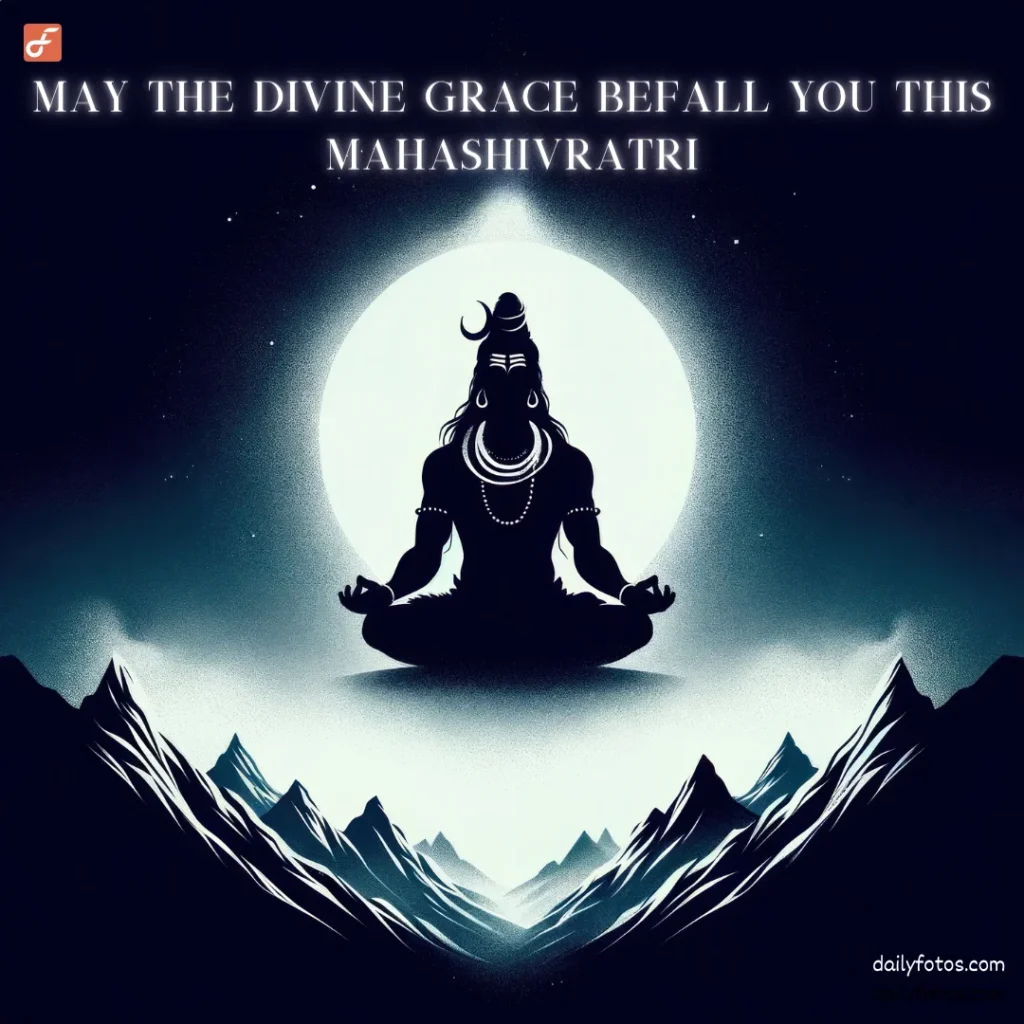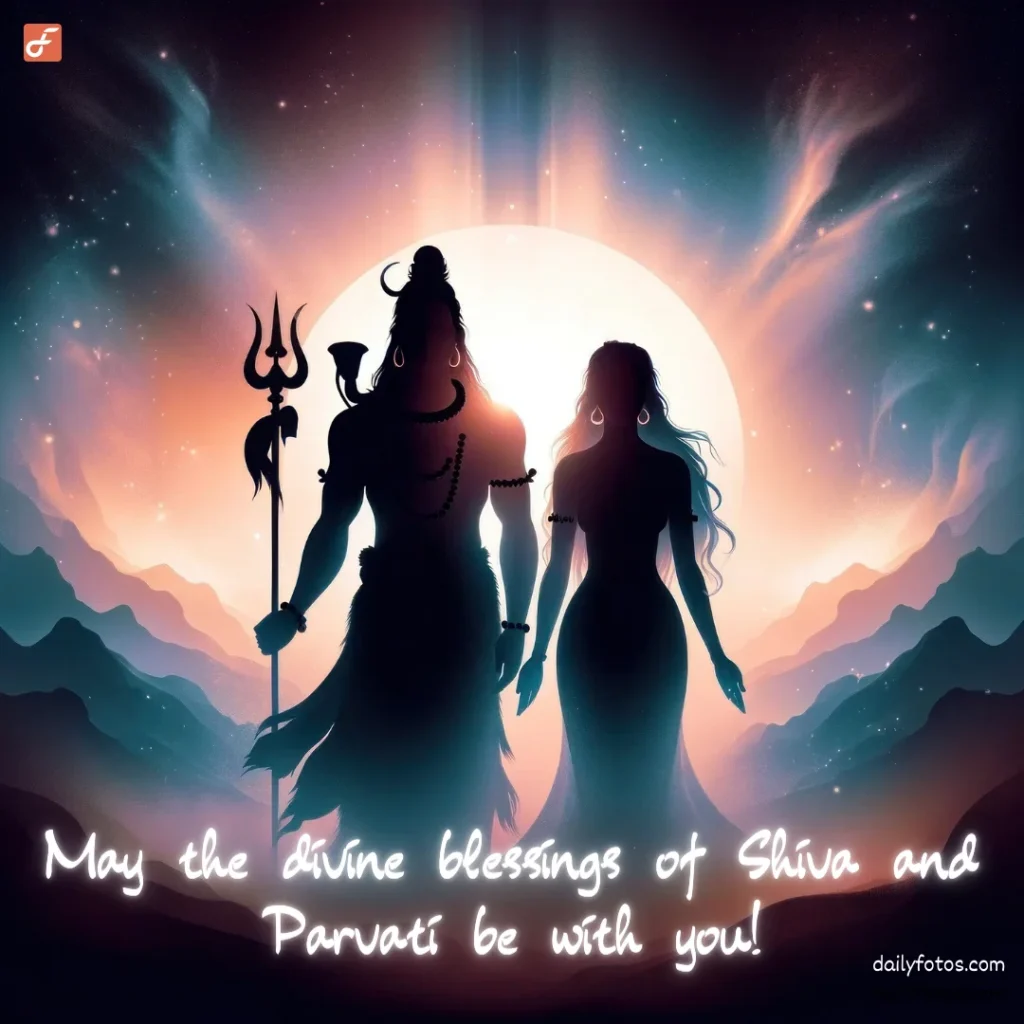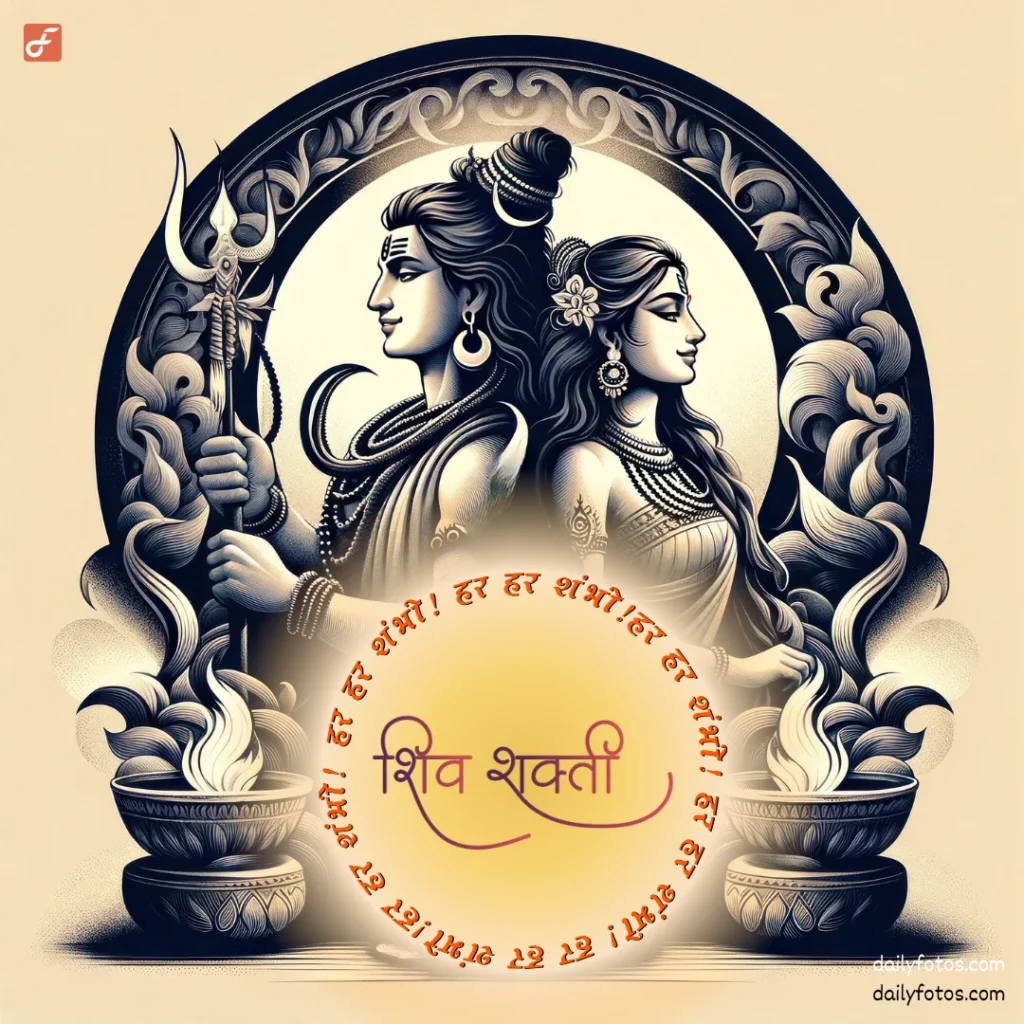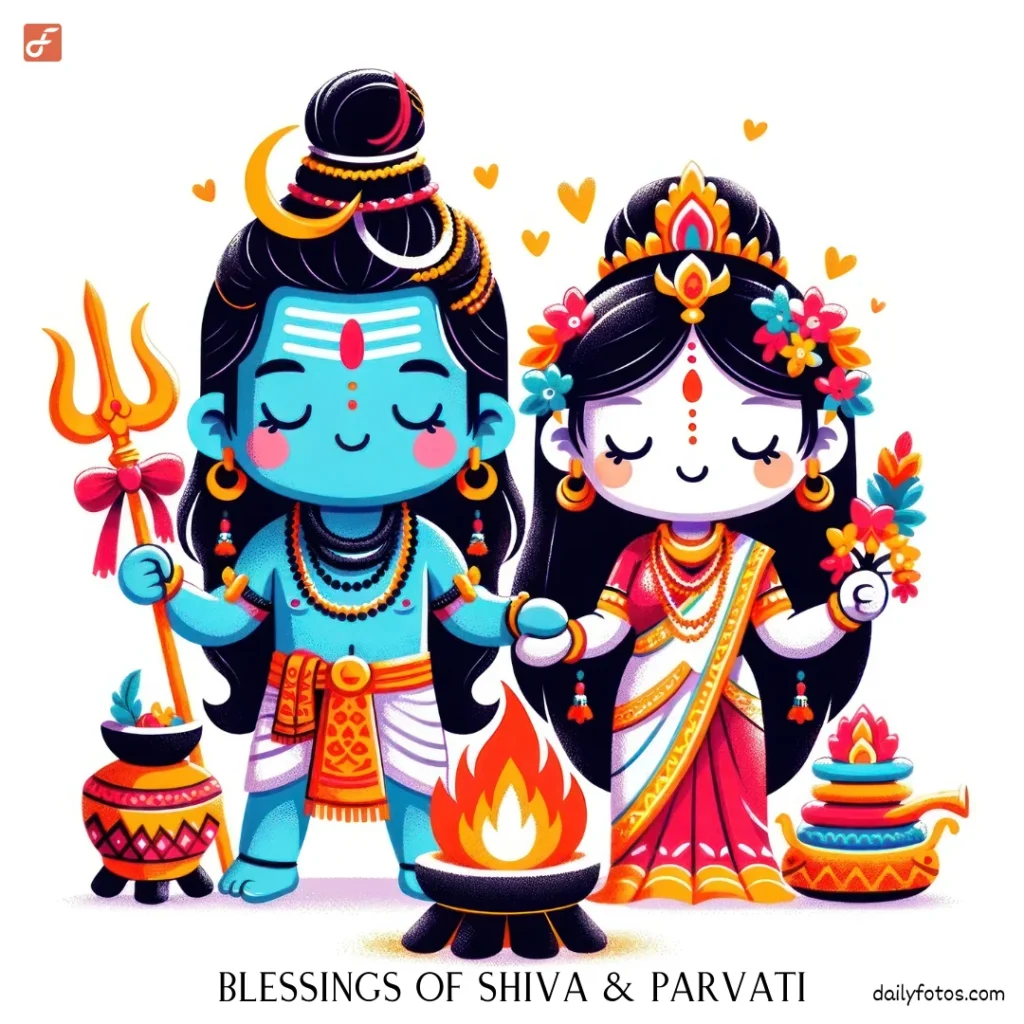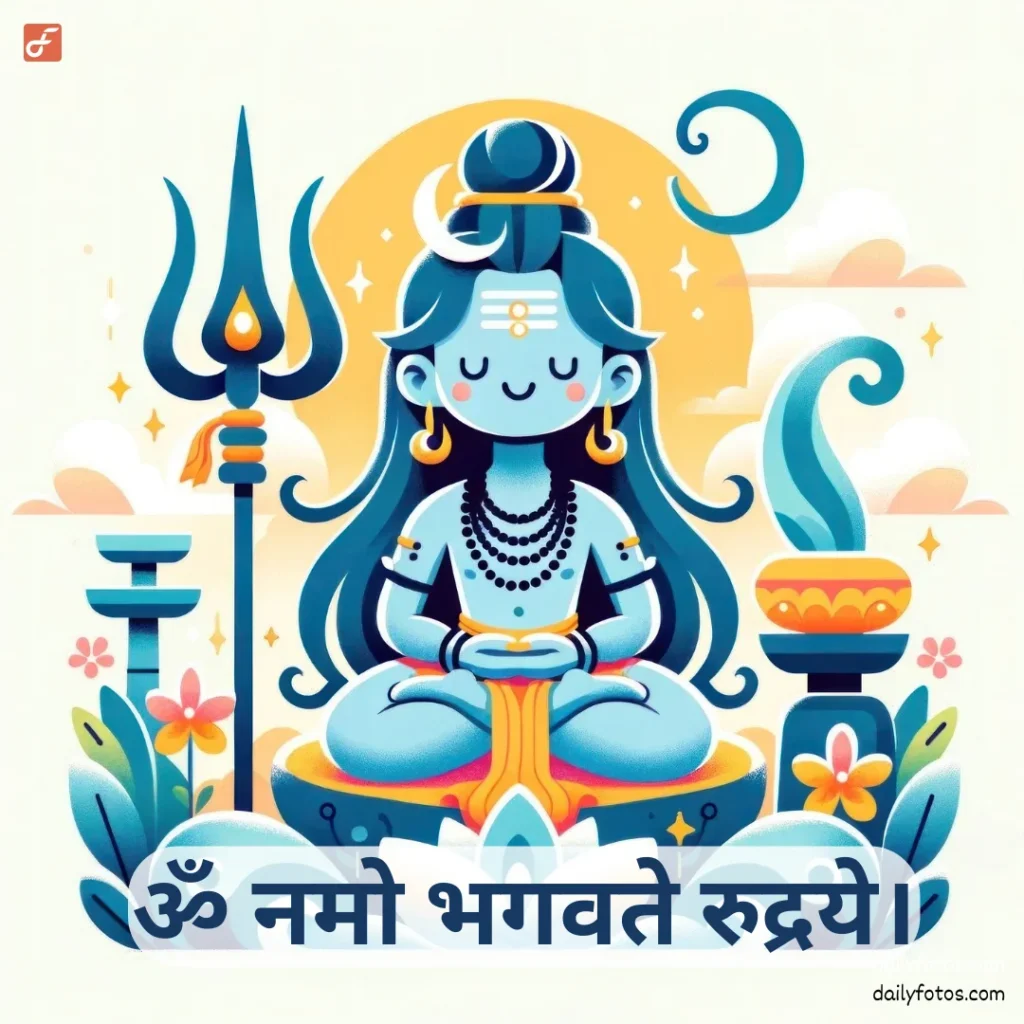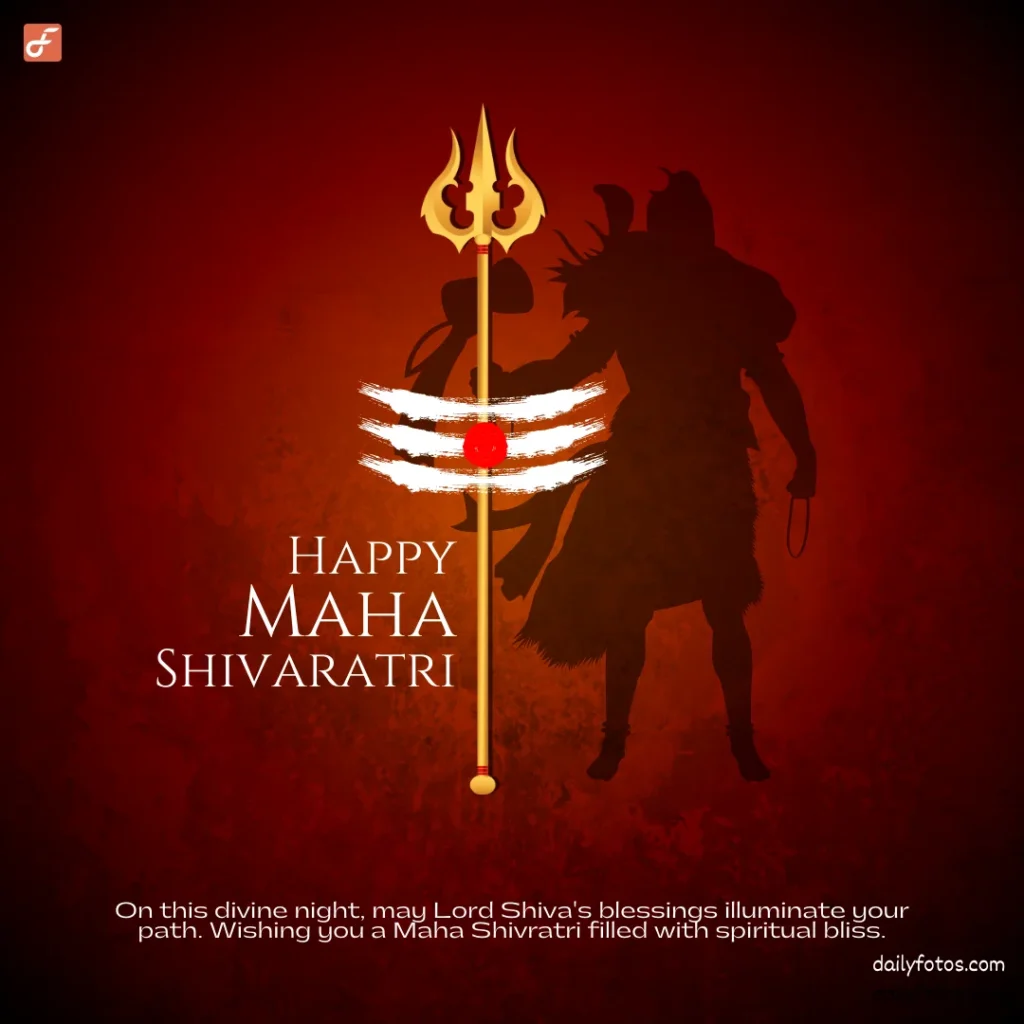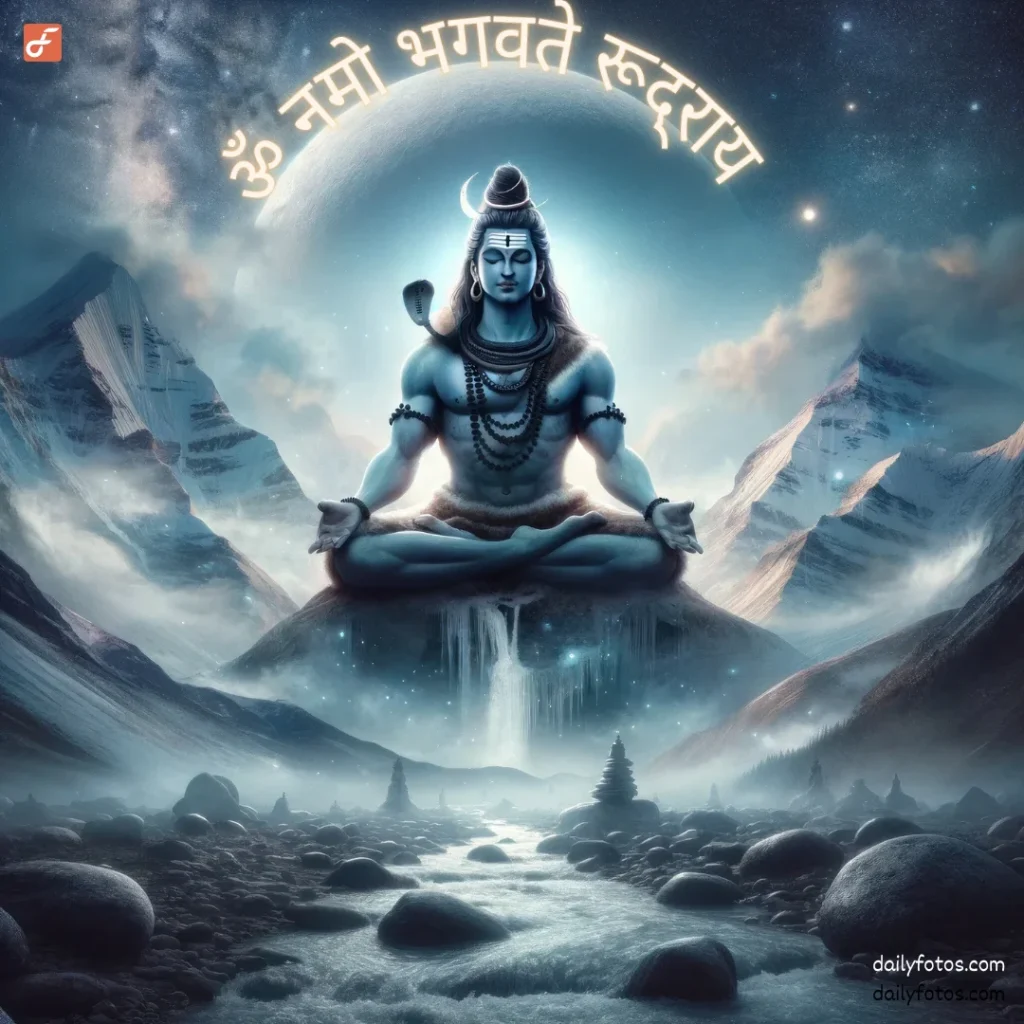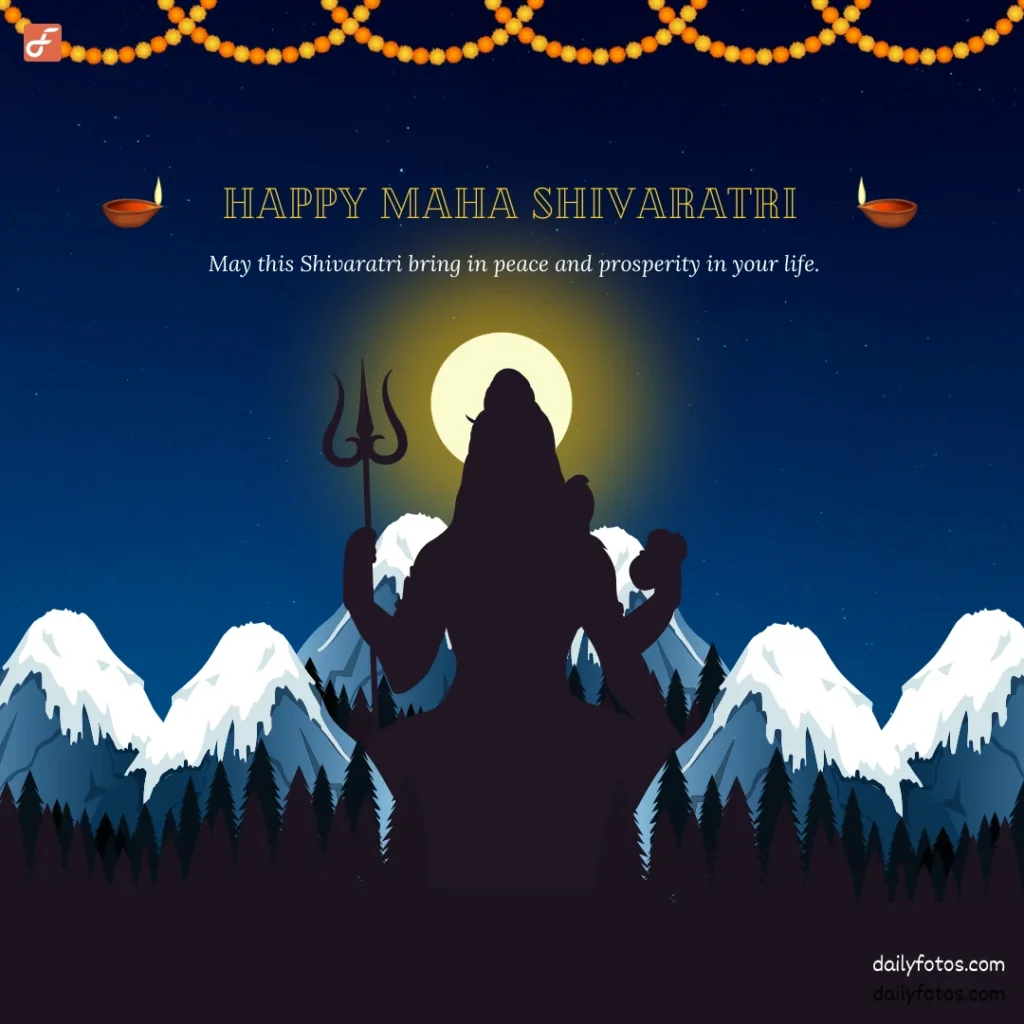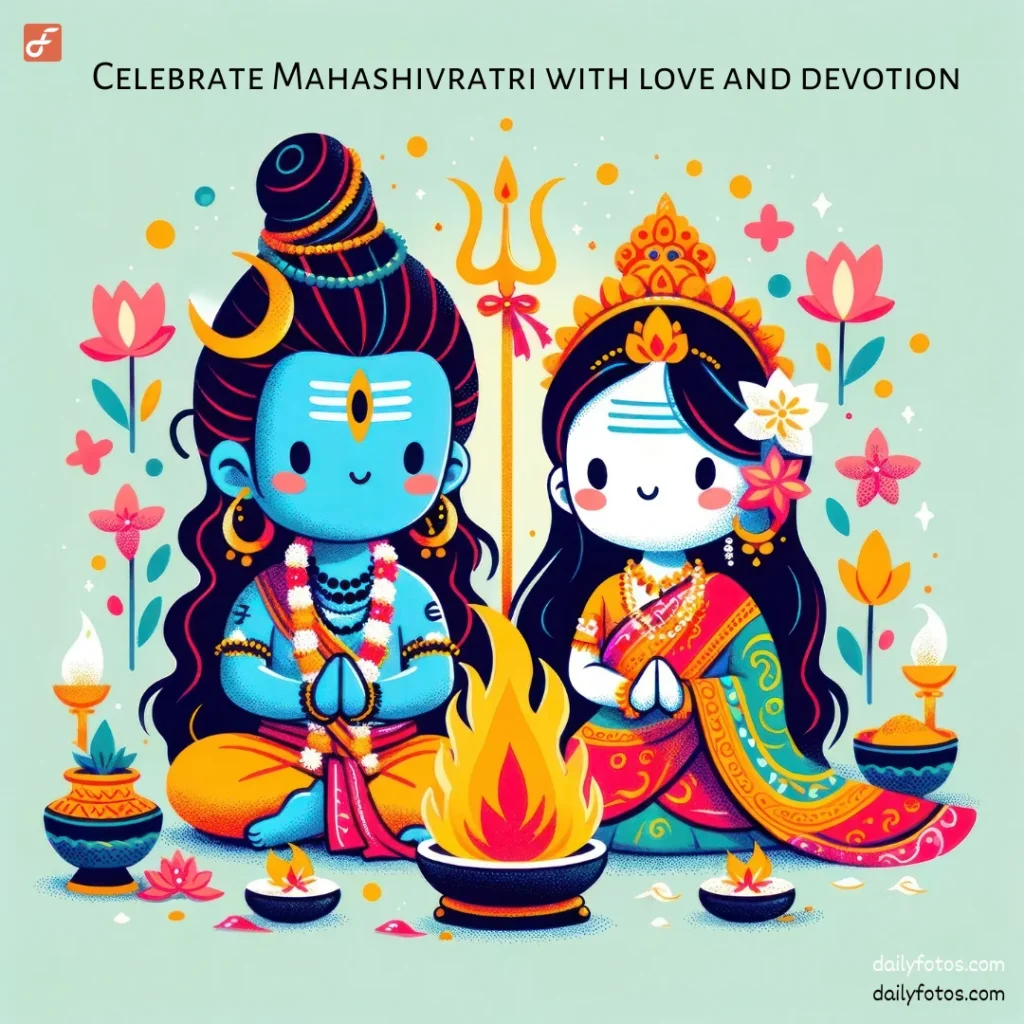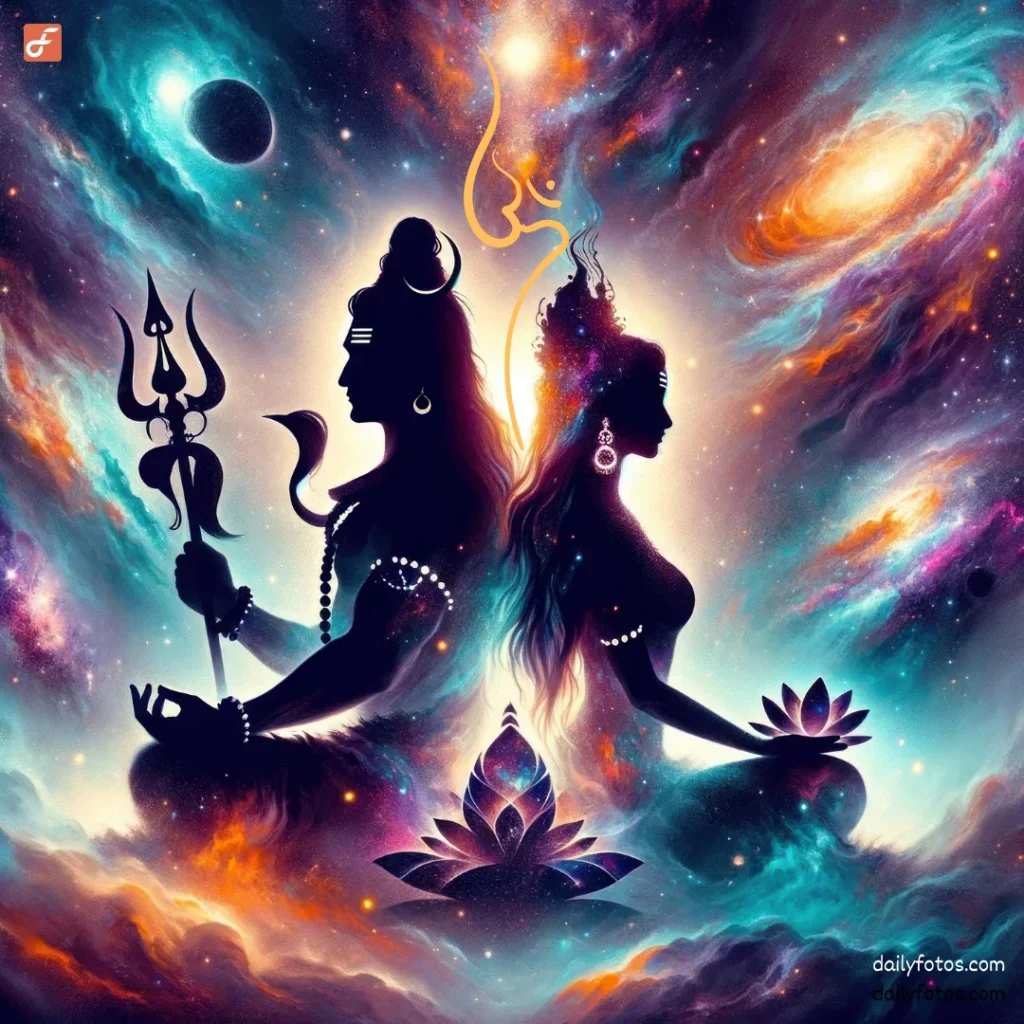Artistic Renaissance: 100+ latest Mahashivratri images 2024
Many more image categories that are Awesome...Cute...Amazing...Mind blowing...Beautiful...Fantastic...
Overview to Mahashivratri
Mahashivratri, celebrated with profound respect in the Hindu tradition, is more than just a festival; it is a cosmic event that provides a special chance for spiritual development and enlightenment. On this auspicious night of Shiva, called “Mahashivratri,” it stands as a pivotal occasion in India’s spiritual timetable, intertwined with numerous myths and the profound knowledge of the past.
The festival celebrates the sacred bond between Lord Shiva and Goddess Parvati, representing the fusion of consciousness and energy, which forms the foundation of the universe. However, Mahashivratri transcends mere marital happiness, symbolizing a deep spiritual awakening and the triumph of good over evil, of purity over sin.
On this auspicious night, it is believed that the northern hemisphere of the Earth aligns in such a way that there is a natural upsurge of spiritual energies, facilitating a closer connection with the divine. This alignment is said to assist in the elevation of one’s soul, making it an ideal time for meditation, introspection, and the realization of one’s true self.
The festival is marked by various rituals and traditions, such as fasting, staying awake through the night in meditation, and offering prayers to Shiva Lingam with milk, water, and honey. Devotees immerse themselves in the chant of “Om Namah Shivaya” hoping to cleanse their souls and attain moksha (liberation from the cycle of birth and death). The essence of Mahashivratri lies in understanding and celebrating the Shiva principle within oneself—recognizing that each individual embodies the divine consciousness that is Lord Shiva.
Mahashivratri also serves as a reminder of the impermanence of life and the importance of dissolving ego and attachments, symbolized by Shiva’s cosmic dance, the Tandav, which signifies the cycle of creation, preservation, and dissolution. This festival encourages devotees to reflect on the vastness of the universe and their place within it, urging them to embrace the oneness of all existence.
By celebrating Mahashivratri, one embarks on a journey from darkness to light, from ignorance to wisdom, and from a finite existence to a state of eternal bliss. It’s a time when the material and spiritual come together, when the divine energy descends to the Earth, making it a profoundly auspicious time for anyone seeking spiritual growth and inner peace.
This grand celebration is not just about adhering to rituals but about internalizing the profound messages that Lord Shiva embodies. It’s an opportunity to let go of the old and embrace the new, to dissolve the ego and realize the eternal truth of Shivoham—’I am Shiva,’ the soul of everything that exists.
As you explore the vast collection of Mahashivratri images, maha shivaratri greetings, and mahashivratri wishes on our website, we invite you to delve deeper into the spiritual essence of this auspicious night. Let each image, each greeting, and each wish be a step towards enlightenment, a step closer to Shiva.
Exploring the Divine tale of Shiva and Parvati
This narrative about Lord Shiva and Goddess Parvati is a profound depiction of Love, devotion, loyalty and determination that plays a significant role in the world of mythologies. Parvati, the daughter of the mountain king Himavat and Queen Mena, was born with an unwavering devotion to Shiva, destined to become his consort. Recognizing her divine destiny, Parvati embarked on a rigorous path of penance and meditation to win Shiva’s heart, who was in deep mourning for his first wife, Sati, and had isolated himself from the world in meditation.
Parvati’s journey was marked by intense penance, during which she faced and overcame numerous trials and temptations. Her unwavering determination and devotion eventually caught Shiva’s attention. Despite the gods’ attempts to test her commitment, including the intervention of Kama, the god of love, Parvati’s love and dedication remained steadfast. Shiva, impressed by her devotion and recognizing her as the reincarnation of Sati, accepted her as his wife, and their union was celebrated by all the gods.
The couple’s marriage symbolizes the perfect union of the male and female principles, bringing balance to the universe. Their stories are not just about the power of devotion but also about the strength of will, the importance of perseverance, and the essence of true love. Together, Shiva and Parvati embody the ideals of marital fidelity and spiritual enlightenment, with Parvati representing the nurturing aspect of the divine feminine power and Shiva symbolizing the cosmic consciousness.
Their children, Lord Ganesha and Lord Kartikeya (Murugan or Skanda), further symbolize their roles as the divine parents of the cosmos. Ganesha, the remover of obstacles, and Kartikeya, the god of war, reflect the diverse aspects of life and spirituality that Shiva and Parvati oversee.
Parvati, in her various forms, including the benevolent forms like Kamakshi and the fierce forms like Kali and Durga, represents the multifaceted nature of the universe, from creation to protection to destruction. Her devotion to Shiva teaches the power of faith and the transformative nature of love, making their legend a cornerstone of Hindu mythology and spirituality.
The Story of Shiva's First Tandav
The intricate movements of Shiva’s cosmic dance, Tandava, symbolize the continuous cycles of birth, conservation, and extinction in the universe. Lord Shiva, also revered as Nataraja, the Lord of Dance, performs this divine dance, which is an allegory of the cosmic cycles that each soul undergoes. The Tandava is not just a dance; it is a visual representation of the energies of the cosmos, showcasing the eternal dance of the celestial universe.
The Tandava is manifested in two primary forms: the Rudra Tandava, which symbolizes destruction, and the Ananda Tandava, which represents creation and bliss. The Rudra Tandava is a fierce, vigorous dance that embodies Shiva’s role as the destroyer of the universe, aiming to annihilate evil and pave the way for renewal. This form of the dance is powerful and intense, signifying the end of an era and the beginning of a new cycle of existence.
Conversely, the Ananda Tandava is a dance of joy and bliss, performed by Shiva in a state of absolute ecstasy. This form of the dance celebrates the creation aspect of the universe, highlighting the beauty, grace, and perpetual nature of life. The Ananda Tandava is a reminder of the happiness that creation brings and the continuous cycle of life and rebirth.
The significance of Shiva’s Tandava extends beyond the physical dance to embody the underlying principles of the Hindu philosophy regarding the universe’s dynamic nature. The dance represents the interplay between the forces of creation and destruction, which are essential for the cyclical nature of existence. Through the Tandava, Shiva conveys that life is a continuous dance of creation and dissolution, an eternal cycle that sustains the universe.
Moreover, the dance of Shiva also incorporates Lasya, the gentle and graceful dance performed by Goddess Parvati, Shiva’s consort. Lasya complements Tandava by symbolizing aspects of beauty, grace, and the feminine energy of the universe. Together, Tandava and Lasya represent the balanced union of masculine and feminine forces, illustrating the completeness and harmony of the cosmos.
The depiction of Shiva as Nataraja, performing the cosmic dance, has been a source of inspiration for numerous artworks, sculptures, and classical dance forms across India. This image serves as a profound symbol of the rhythm of life and the universe’s eternal dance, reminding us of the cosmic laws that govern existence and the divine play of creation and destruction.
In essence, Shiva’s Tandava is a profound cosmic act that encapsulates the essence of Hindu cosmology, portraying the continuous cycle of life, death, and rebirth. It is a reminder of the omnipresent, dynamic, and eternal nature of the universe, where the dance of creation and destruction is an ongoing process leading to the evolution and transformation of the cosmos.
Symbolism of Shiva's role as the Adi Yogi
Maha shivaratri, a revered occasion in the spiritual calendar, is deeply connected with Adi Yogi, the originator of Yoga. This event, celebrated with enthusiasm across the globe, marks a time of profound spiritual renewal and meditation. Adi Yogi, symbolizing the pinnacle of yogic science, offers 112 ways to explore the vastness of human consciousness, making Maha shivaratri not just a night of reverence, but a celebration of universal possibilities.
The festival of Mahashivratri 2024 invites everyone to engage in practices that resonate with the teachings of Adi Yogi. Chanting “Om Namah Shivaya,” meditating, and participating in rituals dedicated to Shiva, the adiyogi, individuals can experience an inner transformation, aligning with the cosmic rhythm of the universe.
The significance of Maha shivratri is magnified by the grandeur of the Adiyogi statue, a monumental tribute to this timeless yogi. Situated in the serene landscapes of the Isha Yoga Center, this statue stands as a symbol of peace, mysticism, and the boundless potential within every individual. It beckons seekers from all walks of life to explore the depths of their being, guided by the light of Adi Yogi’s wisdom.
As the moon waxes for Mahashivratri 2024, let us immerse ourselves in the divine vibrations of this sacred night. Let the stories of Shiva and Parvati, the tales of divine union, and the powerful imagery of the Lord’s Tandava dance inspire us to reach beyond the mundane. This Mahashivratri, let’s embrace the spiritual legacy of Adi Yogi, celebrating with Mahashivratri images that capture the essence of this auspicious night, sharing Mahashivratri wishes that reflect our collective aspirations for peace and enlightenment.
In the spirit of Maha shivratri, we come together, chanting “Har Har Mahadev,” to honor the cosmic dance of creation, preservation, and dissolution. The mahashivratri quotes and the serene adiyogi images remind us of the profound stillness that underlies the universe’s dynamic energy. This Mahashivratri, let us all delve into the silence within, discovering the bliss of oneness with the cosmos, following the path shown by Adi Yogi, the luminous beacon of yogic tradition.
Rituals and Traditions of Mahashivratri
The festival known as Mahashivratri, which is observed with a great deal of devotion all over India, commemorates the night that Lord Shiva performed the divine dance of creation, preservation, and destruction. The event, which is extremely rich in rites and traditions, offers a one-of-a-kind chance for the attainment of serenity and enlightenment, as well as the regeneration of one’s spirituality. As the date of Maha shivaratri 2024 draws near, devotees begin their preparations by abstaining from food for a day.
This is a symbolic act that represents an inward cleaning and readiness to accept divine benefits. With great devotion, the Maha Shivaratri fast is kept, and the culmination of the fast is a feast that is only offered after the night-long vigil. This holy fast, when combined with the worship of Lord Shiva in a traditional manner, is thought to cleanse the soul and put one on the path that leads to salvation.
Participating in Worship and Offerings As devotees congregate to offer milk, honey, and water to the Shivalinga, temples decorated with Maha Shivaratri images and Shiva Parvati photos become the focal points of worship. Chants of Om Namah Shivaya and Har Har Mahadev fill the air with a sense of holy zeal, producing an atmosphere that is filled with its resonance.
This ritual bathing, also known as Abhishekam, is a symbol of the purifying of the mind and spirit, which is an essential component of the celebrations celebrating Maha Shivaratri. Praying and observing vigils in order to embrace the night. One of the most important aspects of Maha Shivaratri is the all-night vigil, which serves as a demonstration of the devotees’ perseverance and commitment.
During this night, devotees pray, meditate, and recite Mahashivratri mantras, which is considered to be the most ideal moment to worship Lord Shiva, according to Hindu belief. Happy Mahashivratri wishes are distributed throughout communities as people express their greetings and wishes for the festival of Maha Shivaratri, thereby spreading happiness and promote spiritual well-being.
Enjoying the festivities with pictures and greetings. The way in which we exhibit our devotion and convey the spirit of the festival is significantly influenced by the use of Mahashivratri images, Shiva Parvati photos, and Mahashivratri quotes in this day and age of digital technological advancement. Devotees from all over the world are able to participate in the celebrations, express their happy Mahashivratri wishes, and ponder on the profound Mahashivratri quotes that encapsulate the essence of this auspicious night.
Websites and social media platforms become swamped with Happy Mahashivratri messages. We should immerse ourselves in the rituals and practices that demonstrate our love to Lord Shiva, who is also known as the Adi Yogi, as the day of Mahashivratri 2024 approaches closer. Through the observance of the fast, participation in the vigil that lasts throughout the night, and the exchanging of Mahashivratri images and wishes, we join millions of people in a communal journey towards spiritual awakening and enlightenment.
Celebration Across India
Across India, this festival is celebrated with an intensity that is unmatched. It is a day that is marked by profound spiritual reverence and an overwhelming sense of joy. This sacred event of Mahashivratri 2024, which is dated on March 8th, sheds light on the varied cultural landscape of India by displaying the various regional variances in celebrations. Each of these celebrations echoes with the chant Om Namah Shivaya and the glory of Har Har Mahadev.
The Maha Shivaratri rituals in Varanasi bring the Ganga ghats to life with pilgrims presenting prayers and Maha Shivaratri images. The city is celebrating the heavenly union of Shiva and Parvati, which is symbolized by elaborate processions and the traditional marriage ceremony of the divine pair. The air is thick with devotion as the city celebrates this union.
Rishikesh and Haridwar, both of which are known for their spiritual atmosphere, celebrate this joyous occasion by doing special pujas and paying aartis to the Ganga. Mahashivratri fasting is a practice that devotees undertake in in order to find consolation and enlightenment. The towns are adorned with photographs of Shiva Parvati and images of Mahashivratri, which contribute to the sense of joy and celebration.
As thousands of people gather to perform the mahashivratri puja, the Mahakaleshwar Jyotirlinga in Ujjain becomes the focal point for mahashivratri aspirations. The devotees who visit this adiyogi temple are looking for blessings that will bring them a life filled with prosperity and spiritual development. This temple is a tribute to the enduring heritage of adi yogi Shiva.
In celebration of Mahashivratri, Mandi hosts a fair that lasts for an entire week and is a showcase of cultural and spiritual zeal. The town, which is frequently referred to as the “Varanasi of the Hills,” is known for showcasing a combination of mahashivratri greetings and cultural legacy, which attracts tourists from several countries across the world.
Under the direction of Sadhguru, the Isha Yoga Center in Tamil Nadu hosts a night of music, dance, and meditation that is focused around the enormous statue of Adiyogi, which is 112 feet in height. This gathering is a contemporary manifestation of historic customs, and it extends an invitation to everyone to participate in the spiritual ecstasy that is Mahashivratri.
Mahashivratri is a festival that is celebrated all across India, from the snow-capped peaks of the Himalayas to the tranquil waters of the south. It celebrates dedication, introspection, and celebration in a way that is consistent throughout the entire country. It is a moment when the internet sphere is flooded with mahashivratri high-definition photographs and cheerful mahashivratri messages from people all around the world, transmitting the spirit of this joyous night to a large audience.
Conclusion
As we draw the celebration of Mahashivratri 2024 to a close, it’s essential to reflect on the profound significance this festival holds in the hearts of devotees across India and the world. This festival is not just a day to honor Lord Shiva, the Adi Yogi, but a momentous occasion that illuminates the path to spiritual awakening and enlightenment.
The legends of Shiva and Parvati, their divine union, and the cosmic dance of Shiva’s Tandav resonate with the core of our beings, teaching us the importance of balance, resilience, and the eternal cycle of life. These stories, deeply embedded in the cultural fabric of India, offer us invaluable lessons on love, devotion, and the pursuit of truth.
Through the night-long vigils, the chanting of “Om Namah Shivaya”, and the ritualistic offerings to the Shiva Linga with milk, honey, and water, devotees immerse themselves in an ocean of spirituality, seeking not just the blessings of Mahadev but a connection with the divine that transcends the material world.
Our website’s gallery, filled with mahashivratri images, shiva parvati photos, and mahashivratri greetings, aims to bridge the gap between the celestial and the terrestrial. These images, infused with the spirit of the divine festival, serve as a beacon for those yearning to deepen their spiritual journey and celebrate this auspicious occasion with fervor and devotion.
As we share happy mahashivratri wishes and immerse ourselves in this occasion, let us carry forward the essence of this sacred night into our daily lives. Let the teachings of Adi Yogi inspire us to explore the infinite potential within and around us, fostering a world where peace, love, and harmony prevail.
This celebration of self love and god love is a reminder that amidst the chaos of life, there exists a serene oasis of spirituality, accessible to all who seek with a sincere heart. May this Mahashivratri fill your life with joy, prosperity, and spiritual bliss.
